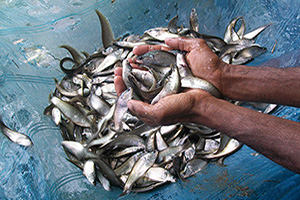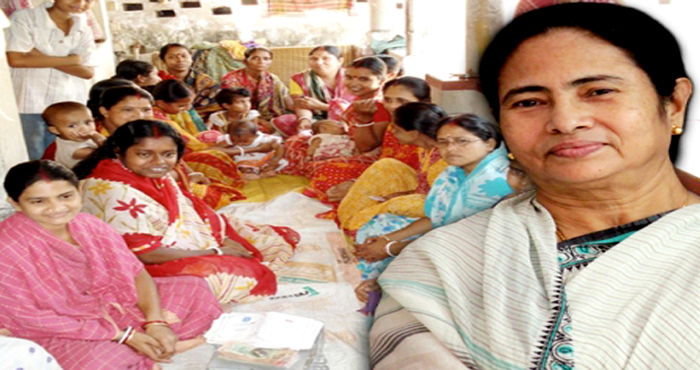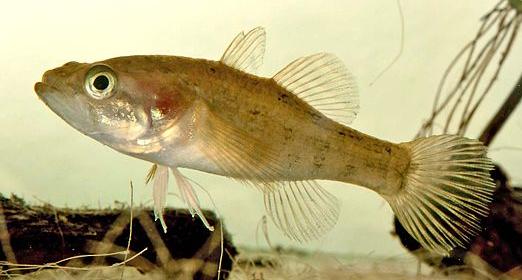In a significant stride towards becoming self-reliant in the production of hilsa (ilish), the State Fisheries Department will now take up the cultivation of the fish in ponds and rivers.
The department has signed an agreement with a Norwegian company. The company has been successful in cultivating salmon in pond and river water, and is helping the State Government in replicating that success for hilsa, according to the Fisheries Minister.
The department gradually wants to stop importing the fish from Myanmar, which is much more than gastronomy for a Bengali. Ilish, as hilsa is called in Bengali, is about identity, history and nostalgia.
Hilsa is a significant component of open-water capture fishery in Bengal, contributing about 19 per cent of the total fish landing in the Hooghly-Matla estuarine system.
Over the years, due to wanton exploitation, pollution and habitat destruction, there has been a decline in the availability of hilsa.
One of the measures to combat this was the setting up, inspired by the vision of Chief Minister Mamata Banerjee with regard to self-reliance in hilsa, of the country’s first ever dedicated Hilsa Conservation and Research Centre (HCRC) at Sultanpur in Diamond Harbour in December 2013 by the Fisheries Department.
The department is in the process of setting up two similar HCRCs in Tribeni in Hooghly district, located on the bank of the Hooghly, and Farakka in Murshidabad district, on the bank of the Ganga.
The catching, marketing and transportation of fishes less than 23 cm in length is banned in the state. The Fisheries Department has put in place vigilante teams in all the concerned districts for keeping regular vigil on markets and landing centres. Special raids are conducted during the designated ban period between September 15 and October 24 each year. The department also maintains coordination and synergy with laboratories and institutes working on hilsa fishery.
The department also takes awareness campaigns for hilsa conservation, by distributing leaflets, putting up banners and posters, and conducting boat and road rallies in areas where the fish is netted by fishermen.
The fish is anadromous, that is, migrates up rivers from the sea to spawn, during the periods from June to September and from January to April.
এবার পুকুর ও নদীতে ইলিশ মাছ চাষ করবে রাজ্য
ইলিশ মাছ উৎপাদনে স্বয়ংসম্পূর্ণ হতে এবার পুকুর ও নদীতে ইলিশ মাছ চাষ শুরু করবে রাজ্য সরকার। এই বিষয়ে নরওয়ের একটি সংস্থার সাথে চুক্তি করবে রাজ্য মৎস্য দপ্তর। এই সংস্থাটি তাদের দেশে পুকুর ও নদীতে স্যামন মাছ চাষে বিপুল সফলতা পেয়েছে।
ধীরে ধীরে মৎস্য দপ্তর মায়ানমার থেকে ইলিশ আমদানি বন্ধ করতে চায়। ইলিশ মাছ শুধুই বাঙালির রসনাতৃপ্তি করেনা, বাংলার সংস্কৃতি সঙ্গে ওতপ্রোত ভাবে জড়িয়ে আছে। তাই এই মাছ চাষে স্বনির্ভর হতে চায় রাজ্য।
সাধারনত ইলিশ মাছ চাষ হয় নোনা জলে, মোহনায়। এতদিন হুগলী-মাতলা নদীর মোহনায় যে মাছ চাষ হয়, তার ১৯ শতাংশই ইলিশ। কিন্তু, দূষণ ও অন্যান্য নানা কারণে দিনে দিনে এই পরিমাণ কমছে।
ইলিশ উৎপাদনে স্বনির্ভর হওয়ার লক্ষ্যে, মুখ্যমন্ত্রীরঐকান্তিক প্রচেষ্টায় ২০১৩ সালের ডিসেম্বর মাসে ডায়মন্ড হারবারের সুলতানপুড়ে দেশের প্রথম হিলসা কঞ্জারভেসন অ্যান্ড রিসার্চ সেন্টার তৈরী করা হয়। এই ধরণের কেন্দ্র আরও দুটি জায়গাতে তৈরী হয়েছে: হুগলী জেলার ত্রিবেণীর ধারে এবং মুর্শিদাবাদ জেলার ফারাক্কায় গঙ্গার ধারে।
২৩ সেন্টিমিটারের চেয়ে কম লম্বা ইলিশ মাছ ধরা, বিপণন এরাজ্যে নিষিদ্ধ। এই নিষেধাজ্ঞা যথাযথ কার্যকর করতে বেশ কিছু আধিকারিকের অনেকগুলি দল রাজ্যজুড়ে পরিদর্শন করে। ১৫ই সেপ্টেম্বর থেকে ২৪শে অক্টোবর প্রচুর রেড করা হয় প্রতি বছর।
ইলিশ মাছ সংরক্ষণের ব্যাপারে মৎস্য দপ্তর সচেতনতা কর্মসূচীরও উদ্যোগ নিয়ে থাকে। লিফলেট বিলি থেকে শুরু করে ব্যানার ও পোস্টার লাগানো, সচেতনতা মিছিল করা এবং মৎস্যজীবীদের সচেতন করা হয় দপ্তরের উদ্যোগে।
জানুয়ারি থেকে এপ্রিল মাস এবং জুন থেকে সেপ্টেম্বর মাস পর্যন্ত ইলিশ মাছ সমুদ্র থেকে নদীতে যায় ডিম পাড়তে। এই সময় মাছ ধরা বারন।
Source: Millennium Post









